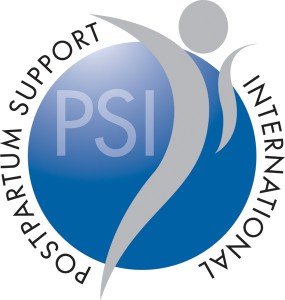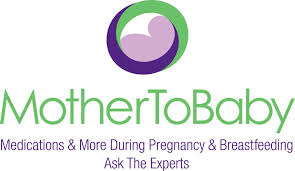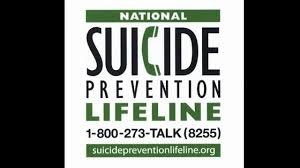October 07, 2013
Postpartum Psychosis: Review and Resources Plus Additional PPMAD Resources
By: Walker Karraa, PhD | 0 Comments
We are just a few days past the sad events that occurred in Washington DC, right near the capital, when Miriam Carey, a mother of a year old child slammed her car into security barricades and led law enforcement officials on a high speed car chase, injured federal officials and was shot and killed, all while having her baby in the car.
It is not clear at this time, what exactly led Miriam Carey to behave the way she did, but it has been suggested that she was suffering from postpartum depression. Postpartum mood and anxiety disorders (PPMAD) affect approximately 20 percent of all new mothers. While not every circumstance of PPMAD escalates into a situation like what we saw last week, we do know that many women and their families are not aware of the signs and symptoms of PPMAD, most women do not seek help and are not provided information and resources for proper treatment. Left untreated PPMADs can become a situation where the mother may harm herself or others.
As childbirth educators and professionals who work with birthing women, it is imperative that we speak and share, both prenatally and in the postpartum period. about PPMAD illnesses, and provide resources for help. Here is some previously provided information on Postpartum Psychosis along with great resources provided by regular contributor, Walker Karraa, PhD. Click to see previous Science & Sensibility posts on postpartum mood and anxiety disorder topics, for even more resources for professionals to share with parents. - Sharon Muza, Science & Sensibility Community Manager.
Despite mounting credible medical evidence of the realty of postpartum issues and their effect on the mindset of the new mother, we as a country still remain the only civilized society that refuses to legally acknowledge the existence of this illness. - George Parnham, Attorney for Andrea Pia Yates
I wrote an OP/ED recently titled, 'Who is at Stake? Andrea Yates, CNN and the Call for Revolution' at Katherine Stone's Postpartum Progress. Given the airing of the CNN Crimes of the Century featuring Andrea Yates, I compiled a brief review of the facts and resources that might be helpful in approaching the topic in childbirth education. Thanks to Sharon Muza for supporting this piece.
Postpartum psychosis (PPP) is a psychiatric emergency that requires immediate medical attention.
It has been acknowledged in medical literature since Hippocrates 4th Century (Brockington, Cernick, Schofield, Downing, Francis, Keelan, 1981; Healy, 2013). In a comparative study of epidemiological data regarding perinatal melancholia from 1875-1924 and then 1995-2005, Healy (2013) concluded:
History shows that complaints can be readily tailored to fashionable remedies, whereas disease has a relative invariance. The disease may wax and wane in virulence, treatments and associated conditions may modify its course, but the disease has a continuity that underpins a commonality of clinical presentations across time. (p. 190)
 Women experience PPP. Women have experienced PPP. And women in the future could avoid this tragedy by recognizing this mental illness. PPP is frequently confused with postpartum depression in public and professional nomenclature. It is extremely important to emphasize the difference in discussion of perinatal mental health with clients and students, as the word 'postpartum' means different things to different students and providers.
Women experience PPP. Women have experienced PPP. And women in the future could avoid this tragedy by recognizing this mental illness. PPP is frequently confused with postpartum depression in public and professional nomenclature. It is extremely important to emphasize the difference in discussion of perinatal mental health with clients and students, as the word 'postpartum' means different things to different students and providers.
Postpartum psychosis is not postpartum depression, lack of sleep, or postpartum anxiety, or post-traumatic stress disorder. PPP is a psychiatric emergency, tantamount to a medical emergency that requires immediate medical attention.
Prevalence
Postpartum psychosis affects 1-2 women per 1,000 births globally, and while rare, it is an extremely severe postpartum mood disorder (Kendell, Chalmers, & Platz, 1987; Munk-Olsen, Laursen, Pedersen, Mors, & Mortensen, 2006). Postpartum psychosis (PPP) occurs in all cultures, affecting mothers across socioeconomic, ethnic, and religious communities (Kumar, 1994).
Symptoms
Symptoms of postpartum psychosis are sudden in onset, usually occurring within 48 hours to 2 weeks following birth. Postpartum psychosis represents 'psychiatric emergency and warrants hospitalization' (Beck & Driscoll, 2009, p. 47).
- Waxing and waning delirium and amnesia (Spinelli, 2009)
- 'Cognitive Disorganization/Psychosis'
- Wisner, Peindl, and Hanusa (1994) discovered that disturbances of sensory perceptions were a feature of the cognitive disruption experienced in postpartum psychosis. These include auditory, tactile, visual, and olfactory hallucinations.
- Memory and cognitive impairment such as confusion and amnesia (Wisner et al., 1994).
- Agitation, irritability
- Paranoid delusions
- Confusion
- Bizarre and changing delusions
- Suicidal or infanticidal intrusive thoughts with ego syntonic feature (Spinelli, 2009; Wisner et al., 1994)
 In other perinatal mood or anxiety disorders, intrusive thoughts of self-harm or harming the baby are known as ego-dystonic and are common (41%-57%; Brandes, Soares, Cohen, 2004). Ego dystonic cognitions are thoughts experienced by the woman as abhorrent, and she recognizes that they inconsistent with her personality and fundamental beliefs (see: Kleiman & Wenzel, 2010 Dropping the Baby and Other Scary Thoughts).
In other perinatal mood or anxiety disorders, intrusive thoughts of self-harm or harming the baby are known as ego-dystonic and are common (41%-57%; Brandes, Soares, Cohen, 2004). Ego dystonic cognitions are thoughts experienced by the woman as abhorrent, and she recognizes that they inconsistent with her personality and fundamental beliefs (see: Kleiman & Wenzel, 2010 Dropping the Baby and Other Scary Thoughts).
In contrast, for a woman experiencing postpartum psychosis, the intrusive thoughts or ideations, of harming self or other are ego-syntonic - intrusive thoughts experienced as reasonable, appropriate and are 'associated with psychotic beliefs and loss of reality testing, with a compulsion to act on them and without the ability to assess the consequences of their actions' (Spinelli, 2009, p. 405).
If left untreated, some dire potential outcomes include:
- 5% of women who experience PPP commit suicide (Appleby, Mortensen, & Faragher, 1998; Knopps, 1993).
- 2%-4% are at risk of harming their infants (Knopps, 1993; Spinelli, 2004).
- As high as a 90% recurrence rate (Kendell et al., 1987)
Risk Factors
- Women with history of bipolar disorder or previous postpartum psychosis
'A personal history of bipolar disorder is the most significant risk factor for developing PP.' (Dorfman, Meisner, & Frank, 2012, p. 257)
- Having a first-degree relative who has bipolar disorder, or experienced an episode of postpartum psychosis
- Current research demonstrates that contrary to popular beliefs, PPP is often the result of either bipolar disorder or major depressive disorder with psychotic features, and there is little frequency of PPP caused by reactive psychosis or schizophrenia (McGorry & Connell, 1990).

Suggestions for Educators:
Reflect/Remind/Review/Refer
Given the stigma, misinformation and confusion regarding postpartum mental illness and particularly postpartum psychosis - it is important to clearly, and objectively identify and differentiate the full spectrum of perinatal mood and anxiety disorders. From the most prevalent and benign 'baby blues' to the most rare and severe postpartum psychosis, women and partners need accurate, accessible information to dispel myths, and give resources. See your education organization for their handouts, citations and referrals regarding PMADs in your curriculum.
 Reflect back that you hear their concern. Repeat the question out loud so that others hear it. Chances are everyone in the room has a question around the topic of mental health, and as we know, 1 in 7 of the general population of childbearing women will develop a postpartum mood or anxiety disorder. Acknowledging the topic non-judgmentally by restating the question brings the topic into the room, reflects that you have heard the concerns expressed and not expressed, and that you are capable of holding the space for a quick, accurate review.
Reflect back that you hear their concern. Repeat the question out loud so that others hear it. Chances are everyone in the room has a question around the topic of mental health, and as we know, 1 in 7 of the general population of childbearing women will develop a postpartum mood or anxiety disorder. Acknowledging the topic non-judgmentally by restating the question brings the topic into the room, reflects that you have heard the concerns expressed and not expressed, and that you are capable of holding the space for a quick, accurate review.
Remind: PPP is Rare but Real
Remind class/clients that the incidence of PPP is extremely rare. Only 1-2 per 1,000 women develop postpartum psychosis. Secondly, with medical attention and treatment, PPP is preventable, and treatable. It is different than postpartum blues, depression, PTSD, or anxiety. Symptoms of PPP require immediate medical attention. 
Review the Facts
- Rates: Only occurs in 1-2 per 1,000
- Risk: Women with history of bipolar disorder or previous postpartum psychosis, and women with family history of bipolar disorder or first degree relative with history of postpartum psychosis are at higher risk.
- PPP is preventable
- PPP is treatable
- PPP prevention and treatment require medical evaluation, intervention and care
Refer to Resources
What makes a good resource? Referring to accurate and accessible resources is an essential response to questions and concerns regarding postpartum psychosis (PPP). Avoid any anecdotal advice regarding complimentary alternative medicine. The onset of PPP is tantamount to a medical emergency and requires immediate medical attention.
Have resources available in several formats and languages just as you would for other resources regarding childbirth education. Make sure your links, telephone numbers, and local resources are working and up to date.
Resources for Women and Partners Postpartum Progress
Postpartum Psychosis Symptoms (in Plain Mama English)
Postpartum Support International 1-800-944-4PPD
National Suicide Prevention Lifeline 1-800-273-TALK
Mother to Baby (formerly OTIS)
Medications & More During Pregnancy & Breastfeeding.
(866) 626-6847
Text-4-Baby Health Info Links
References
Appleby, L., Mortensen, P., & Faragher, E. (1998). Suicide and other causes of mortality after post-partum psychiatric admission. British Journal of Psychiatry, 173, 209-211.
Beck, C. & Driscoll, J. (2006). Postpartum mood and anxiety disorders: A clinician's guide. Sudbury, MA: Jones and Bartlett.
Braun, V., & Clarke, V. (2006). Using thematic analysis in psychology. Qualitative Research in Psychology, 3, 77-101. doi:10.191/1478088706qp063oa
Brockington, I. F., Cernik, K. F., Schofield, E.M., Downing, A.R., Francis, A.F., & Keelan, C. (1981). Puerperal psychosis: phenomena and diagnosis. Archives of General Psychiatry, 38, 829-833.
Dorfman, J., Meisner, R., & Frank, J.B. (2012). Prevention and diagnosis of postpartum psychosis.Psychiatric Annals, 42(7), 257-261. doi:10.3928/00485713-20120705-05.
Doucet, S., Letourneau, N., & Blackmore, E. R. (2012). Support needs of mothers who experience postpartum psychosis and their partners. Journal of Obstetric, Gynecological & Neonatal Nursing,41(2), 236-245.
Healey, D. (2013). Melancholia: Past and present. Canadian Journal of Psychiatry, 58(4), 190-194.
Kendell, R., Chalmers, J., & Platz, C. (1987). Epidemiology of puerperal psychosis. British Journal of Psychiatry, 150, 662-673.
Knopps, G. (1993). Postpartum mood disorders: A startling contrast to the joy of birth. Postgraduate Medicine, 93, 103-116.
Kumar, R. (1994). Postnatal mental illness: A transcultural perspective. Social Psychiatry and Psychiatric Epidemiology, 29, 250-264. doi:10.1007/BF00802048
McGorry, P., & Connell, S. (1990). The nosology and prognosis of puerperal psychosis: A review.Comprehensive Psychiatry, 31, 519-534.
Munk-Olsen, T., Laursen, T., Pederson, C., Mors, O., & Mortensen, P. (2006). New parents and mental disorders: A population-based register study. Journal of the American Medical Association,296(21), 2582-2589. doi:10.1001/jama.296.21.2582
Spinelli, M. (2004). Maternal infanticide associated with mental illness: Prevention and promise of saved lives. American Journal of Psychiatry, 161(9), 1548-1557.
Tags
Postpartum depression Postpartum Mental Health Postpartum Psychosis Walker Karraa PPMAD PPMD Treatment For Postpartum Psychosis Postpartum Mental Health